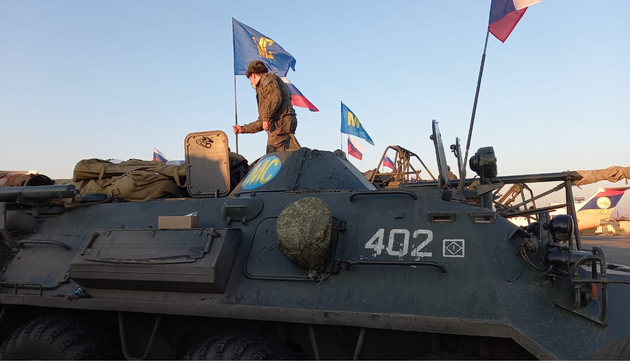Azerbaijan and Armenia signed a new ceasefire accord on November 10, finally halting the latest round of fierce fighting in Karabakh that had been raging for a month and a half. This time, the new document, signed by the leaders of Armenia, Azerbaijan and Russia, appears more likely to decrease tensions and ensure the two sides will stick to their obligations. Namely, the agreement includes a well-defined schedule for the withdrawal of Armenian forces from Aghdam, Lachin and Kalbajar, The Jamestown Foundation writes in the article The New Truce in Karabakh: Implications for Azerbaijan and the Region.
At the same time, however, the document does not mention the future status of Karabakh. Proclaiming this as a diplomatic victory, Azerbaijani President Ilham Aliyev said that the issue of the status of the territory was intentionally kept out of the document and would not be up for debate for as long as he stayed in power. The leader of the Armenian community in Karabakh, Arayik Harutanyan, expressed his support for the trilateral statement, noting, “If the fighting had continued, we would have lost the whole of Artsakh [Armenian name for Karabakh] within a few days, and we would have had more victims.”
The Russian-brokered document cements Moscow’s predominant position in the region. Russian soldiers left Azerbaijan in 2012, after the closure of the Gabala radar station, but are now set to return to Azerbaijani territory as peacekeepers. This option was long rejected both by Armenia and Azerbaijan (Crisisgroup.org, December 20, 2019). Nonetheless, this time around, Russia managed to obtain the two parties’ approval to deploy forces, which look destined to stay in the region for at least the next five years. As such, Russia succeeded in strengthening its military position on the ground in the vicinity of regional “Silk Road” transit projects backed or promoted by China as well as the multi-billion-dollar energy infrastructure carrying Caspian-basin oil and natural gas to Europe—namely, the Baku–Tbilisi-Ceyhan (BTC) and South Caucasus pipelines.
Although Moscow had always emphasized the importance of the Minsk Group format for resolving the Karabakh conflict, the November 10 trilateral ceasefire statement notably does not refer to the Minsk co-chairs. Moscow brokered this latest deal while the presidential election has dominated the agenda in the US, and it has kept all other Western actors outside of discussions. However, Ankara now seems to be finding a place for itself in the equation. Namely, Aliyev stated that Turkish service members would be involved in monitoring the ceasefire and that Turkey would officially play a role in the future settlement of the conflict.
Russia is moving swiftly to send its troops to the region following the truce. Its soldiers will keep open the Lachin corridor linking Karabakh and Armenia as well as replace Armenian forces along the Line of Contact as the latter withdraw. Moreover, Russia’s Federal Security Service (FSB) will oversee the transport connections between Nakhchivan and mainland Azerbaijan.
The main risks that lie ahead will surely relate to the actual withdrawal of Armenian forces from the occupied territories. Even though the November 10 accord suggests that the peacemaking center will monitor both parties’ fulfillment of the agreements, the document does not specify a specific enforcement mechanism. Whether Armenia abides by the given schedule will remain a critical question for the next few weeks.
The resulting political turbulence in Armenia illustrates that Pashinyan’s control over the country was more fragile than it may have appeared. From the Kremlin’s perspective, this is not a loss and may, in fact, be seen as a political gain. Pashinyan came to power in a triumphant “Velvet Revolution”; but now his political career is in danger. Yet Baku understands that his future is also linked to the fulfillment of the November 10 agreement, thus putting the durability of the truce in question.






